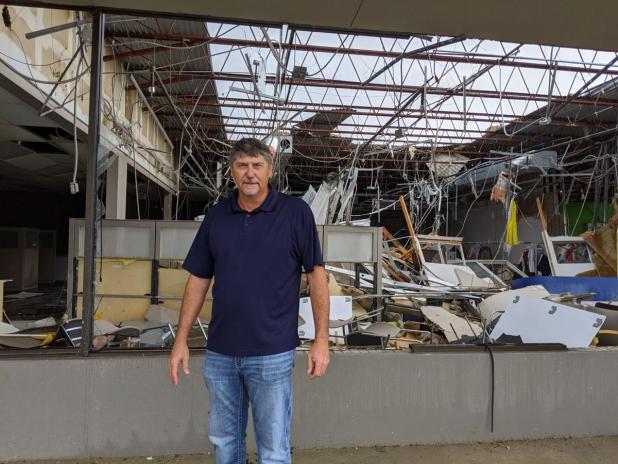
Abbeville resident Neal Guidry stands in front of what used to be his office in Lake Charles.
The Center Square/David Jacobs
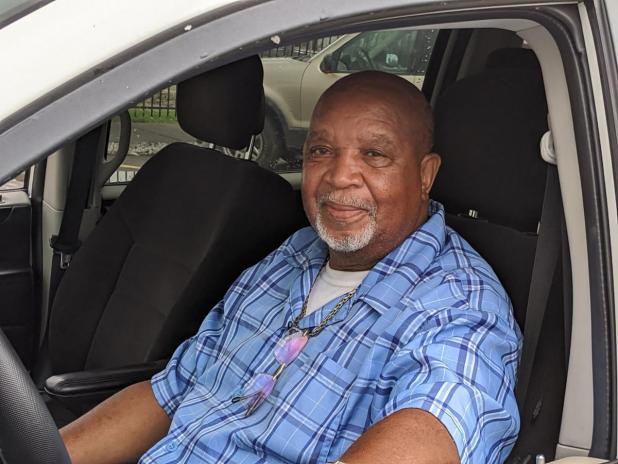
Pastor Russell Benoit of the Lord's Outreach Worship Center in Lake Charles prepares Friday to take 40 people to Baton Rouge or New Orleans.
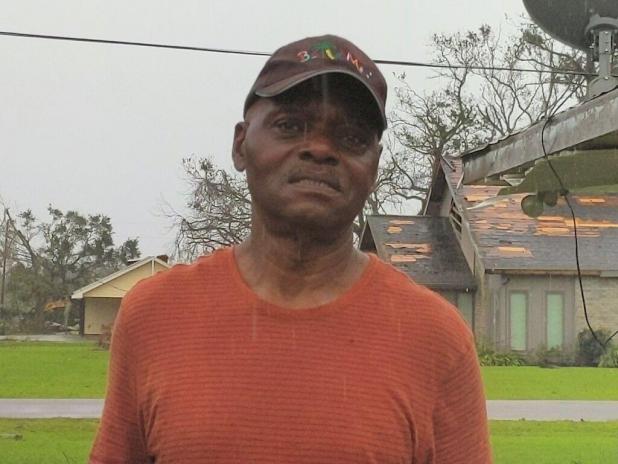
Thomas Young of Lake Charles returns to his home Friday to see how much it was damaged by Hurricane Laura.
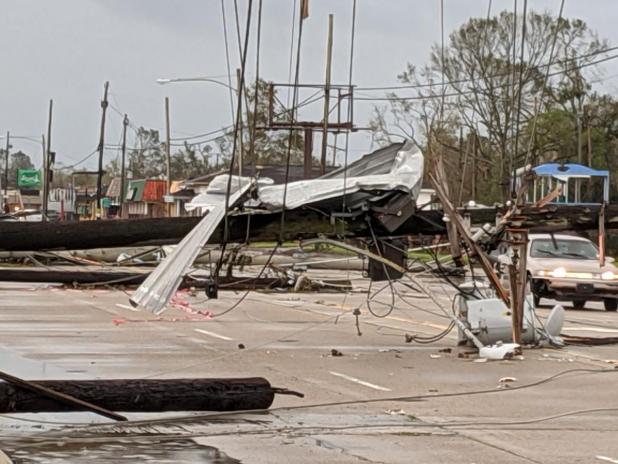
Downed utility poles block traffic Friday in Lake Charles.
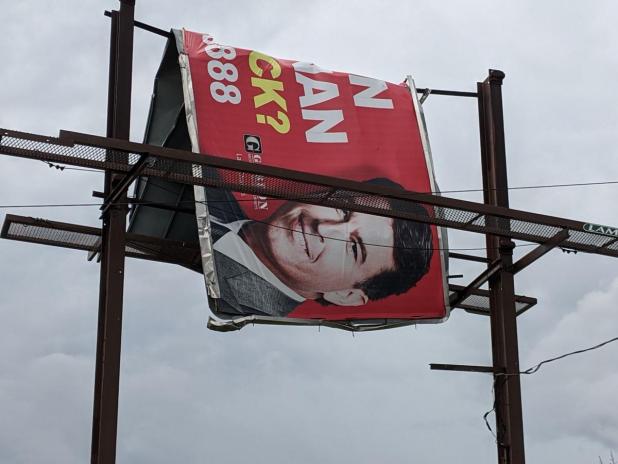
The wind tore up this billboard in Lake Charles for a personal injury attorney.
12 dead in Laura's aftermath
Editor's note: Since this story was filed, authorities have confirmed two more carbon monoxide fatalities, a couple in their 80s in Allen Parish.
Louisiana residents on Friday began the long cleanup and recovery process after Hurricane Laura – the most powerful storm to hit the state in modern history – left a trail of destruction along the western half of the state.
Neal Guidry worked for a major retailer’s storm response team when Hurricane Rita hit Louisiana in 2005, taking a very similar path into southwest Louisiana as Laura. Today, he works for a national tax preparation chain, and as he looked over the damage to his office in Lake Charles, he said the devastation to the city far exceeds what he saw 15 years ago.
“This is unbelievable,” he said. “I’ve been through a lot of storms.”
Lake Charles, a city of about 78,000 people in southwest Louisiana, is the largest population center that was directly in Laura’s path. The city on Friday lacked electricity and drinkable water, and as Guidry gestured toward thick utility poles that lay across two lanes of a four-lane city street, resembling trees that had been chopped down just above the roots, he guessed that restoring power would take three to four weeks.
"Our water plants took a beating. Our capacity is a fraction of what it should be. There is barely a trickle of water coming out of most faucets in the homes of Lake Charles," Lake Charles Mayor Nic Hunter wrote in a social media post. "Basically, if you come back to Lake Charles to stay, make sure you understand the above reality and are prepared to live in it for many days, probably weeks. 'Look and Leave' truly is the best option for many."
Almost 200 miles to the north in Ruston, a northwestern Louisiana city that rarely if ever experiences hurricane-force winds, the damage was nowhere near as severe. But 60 percent of the city’s homes and businesses still were without power Friday afternoon, Mayor Ronny Walker said.
Gov. John Bel Edwards on Friday requested the federal government declare a major disaster for 23 Louisiana parishes. If approved, the declaration would allow for federal monetary aid to residents and communities.
More than 500,000 state residents remained without power Friday, and 82 water systems serving more than 200,000 people also were down, Edwards’ office said. More than 6,200 National Guard members had been activated for the response, Edwards, said, adding a “rolling series of evacuations” of nursing homes and hospitals was ongoing.
Edwards said Laura, with sustained winds of about 150 miles per hour, was the strongest storm to hit Louisiana at least since the 1850s. He said storm surge, which is when a storm pushes sea water higher than normal, reached 15 feet, but not the 20 feet that was feared, in part because the storm shifted slightly to the east so the strongest winds never reached the Calcasieu Ship Channel.
“We didn’t have inundation 30 miles inland as they had predicted,” Edwards said. “That didn’t mean we didn’t have tremendous devastation.”
Southwest Louisiana also happens to be the region of the state with the highest positivity rate for COVID-19. State officials have sheltered more than 3,000 evacuees in hotel rooms to avoid putting people in mass shelters where the coronavirus can easily spread. COVID-19 testing was shut down this week, though Edwards said testing will resume Monday.
Russell Benoit, pastor of The Lord’s Outreach Worship Center in Lake Charles, sheltered 40 people at the center as the storm passed overnight late Wednesday and early Thursday. He said everyone was doing fine until the roof started to peel off about 1 a.m.
On Friday morning, Benoit said he had “three or four vans” to bring his group, which includes members of his church and people who stay at one of the two homeless shelters he runs in the city, to find hotel rooms in Baton Rouge or New Orleans.
“They’re stressed out,” he said. “We’re fixing to go east, and we don’t know where we’re going.”
Lifelong Lake Charles resident Thomas Young had just returned home Friday after evacuating to New Orleans in time to find steady rain leaking through his now-porous roof. He said he still needed to check on the home of his son, who was in Houston.
“It’s going to take a while,” he said when asked how long it would take before life returned to normal.
As of 5 p.m. Friday, Edwards’ office had confirmed 10 storm-related deaths, though higher totals were being reported. Four deaths were caused by trees falling on homes, five people died from carbon monoxide poisoning caused by a generator running inside their home, and one man drowned in his boat, Edwards said.
President Donald Trump said he plans to tour Hurricane Laura damage in Louisiana and Texas this weekend.
